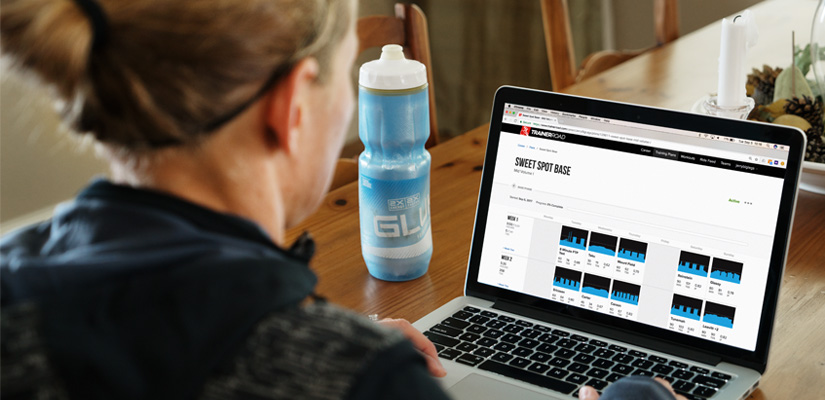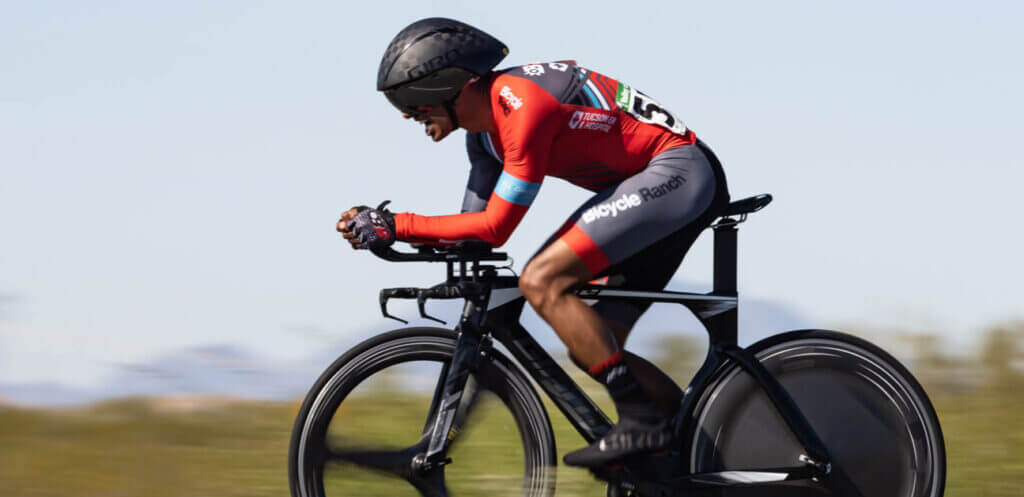How to Follow a TrainerRoad Training Plan

Answer: TrainerRoad training plans are built upon a science-backed training process. This process consists of three consecutive training phases: Base, Build and Specialty. Riders follow this process to reach peak fitness and get faster.
What are the phases of a TrainerRoad training plan?
The three phases of a TrainerRoad plan are Base, Build and Speciality. Each training phase has training plans specific to the fitness adaptations a rider is trying to achieve. Athletes establish new fitness by following a plan’s prescribed workouts, which are progressive, properly timed and apply specific types of training stress.
To reach peak fitness, cyclists complete these three training phases, starting first with a 12-week Base phase plan, followed by an 8-week Build phase plan, and ending with a 8-week Specialty phase plan. The lengths of some triathlon training plans vary to be less than that.
It typically takes riders 28 weeks to complete a full structured training plan. If you have more or less than the suggested 28 weeks to train, you can modify your training plan based on your goals.
- By following a Base training plan, you will establish fundamental aspects of your fitness capabilities. The primary focus is on aerobic endurance, muscular endurance, and form/speed/power techniques.
- By following a Build training plan, you will escalate the focus on aerobic endurance, muscular endurance, and high-end power to become slightly more specific to the type of riding you take part in.
- By following a Specialty training plan, your training will become even more refined to your rider-type in this final phase of training. The entire 28-week progression through Base, Build, and Specialty phases hinges on achieving peak form to be as fast as possible at just the right time.
Takeaway
TrainerRoad’s training plans typically take 28 weeks and are broken into three sequential phases: Base, Build, and Specialty.
How do I prioritize training phases?
The Base, Build, and Specialty phases of training are meant to be followed sequentially. If you’re new to TrainerRoad and the rigors of high-intensity interval training, or you’re coming back from a substantial break from time off the bike, every rider should start their training in the Base Phase by following a Base training plan.
With the exception of our triathlon-specific Base training plans, we offer two Base training plans: Sweet Spot Base and Traditional Base. If you’re just starting out with TrainerRoad, 99% of cyclists will benefit the most from doing the Sweet Spot Base I and II training plans before moving into their Build and Specialty plans.
Sweet Spot Base training plans fit the majority of athletes because you establish a greater amount of fitness more efficiently. A Traditional slow, long-distance approach can require upwards of 12 hours of time investment most of us don’t have. And the focus within our Sweet Spot Base training plan creates a more well-rounded rider in less time.
Takeaway
TrainerRoad’s training plans should be followed in sequential order with the majority of riders beginning their training with our Sweet Spot Base training plans.
Can I skip training phases?
Typically, we do not recommend athletes skip any training phases. You will get the fastest if you work through all three training phases in order and to completion before moving onto your next phase of training. That said, we recognize every rider getting started with TrainerRoad has different time constraints, as well as different levels of fitness and cycling backgrounds going into their structured training.
Those riders with heavily experienced backgrounds who are familiar with the level of base training they have in the season can decide to bypass the Base phase, and move straight into a Build or even Specialty phase. With that said, we recommend all athletes put in base training. It comes down to a matter of how much and how often you need to revisit it.
One of the more common situations we’ll see is the weekend warrior who has less than the recommended 28 weeks to complete Base, Build, and Specialty and wonders if they can skip base training. We’d suggest s/he complete the entire Base phase of training and move as far along through the Build and Specialty training plans as time will allow.
Another situation we often see is an experienced racer who is targeting two events. Say there is 12 weeks between the two events. We’d suggest s/he complete the Base, Build, Specialty sequence leading up to the first event. After taking 1-3 weeks of downtime (e.g. low-intensity riding/time-off completely), start either the first or second 4 weeks of a Build plan. Then progress through as much of a Specialty plan leading up to that second event as time will allow.
Takeaway
We don’t recommend athletes skip any training phases unless they come from a very experienced background and know they have the fundamental fitness in place before jumping into a Build or Specialty plan.
Should I Follow a Training Plan If I’m Not Training For an Event?
Even if you’re not training for an event, following the Base, Build, Specialty cycle is the most effective way to become a faster cyclist. If your intent is to increase your fitness, structure is absolutely vital. Incrementally challenging the body with training stimulus, supported by scheduled recovery, provides athletes exactly what they need to get faster.
After riders complete an entire Base, Build, Specialty cycle they will have a couple options:
- If you have another competitive season ahead of you, we’d recommend entering back into a Build and Specialty phase. You may need to truncate one or the other to fit your season properly.
- If you don’t have another race on the horizon, we’d still recommend using any of the training phases, Base, Build, or Specialty to focus on a different aspect of your riding.
In all cases, we recommend riders take 1-3 weeks for some low-intensity riding/time-off completely before jumping back into training.
Takeaway
Even if you’re not training for an event, following the Base, Build, and Specialty cycle is the right way to become a faster cyclist. Using the components of the Base, Build, Specialty cycle in the “off-season” is also a great opportunity to focus on other aspects of your abilities.
For more answers to your cycling training questions, listen to the Ask a Cycling Coach podcast presented by TrainerRoad. New episodes are released weekly.

